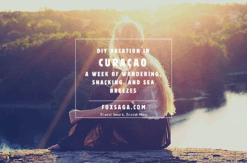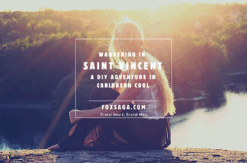There’s something about landing in Saint Lucia that instantly feels like a deep exhale. It could be the warm air wrapping around your shoulders like a friendly hug, or maybe it’s the sudden realization that the ocean is now a few steps from your door. Either way, arriving on this lush Caribbean island in June hits different — fewer crowds, plenty of sunshine, and just enough breeze to keep you from melting.
For the budget-conscious wanderer who prefers charm over luxury resorts and adventure over all-inclusive schedules, Saint Lucia offers more than just postcard views. Especially if you're staying in a well-rated guesthouse near the beach, with a private bathroom and a local host who actually smiles like they mean it — you’re in for a treat.
The guesthouses here are often family-run, well-kept, and close enough to the sea that you can hear the waves before your first coffee. They’re not trying to impress you with marble floors or infinity pools. Instead, you get hammocks on the porch, tropical gardens in the yard, and the kind of peace you can’t really pack into a brochure.
And here’s where the fun begins.
Wake-Up Calls by Ocean Breeze
Mornings in Saint Lucia start slow — not because you're lazy, but because the place insists on it. A quick walk to the beach reveals locals casting fishing lines and roosters doing their off-key thing. The water is warm, clear, and always ready for a swim before breakfast.
Local cafés (and let’s be honest, beach shacks with personality) offer up saltfish, bakes, or fresh tropical fruit smoothies. You can eat like a king for around $10–$15 CAD if you stick to local spots — and you should.
Must-See Sights Worth Wandering For
Saint Lucia is not the kind of island where you just sit on a beach and call it a day — unless you want to, in which case, no judgment. But for wanderers, the island is a goldmine of natural wonders and cultural gems.
First up: The Pitons. These dramatic volcanic spires are basically the island’s mascots. You can see them from multiple spots, but if you're feeling adventurous, hiking Gros Piton is the way to go. It’s a half-day climb that will leave your legs wobbly and your camera roll full. Guided hikes cost around $50–60 CAD, and they’re worth every dollar for the bragging rights and panoramic views.
Then there’s Soufrière, a town that smells faintly of sulfur and adventure. The Sulphur Springs here are the Caribbean’s only “drive-in volcano,” which sounds like a sci-fi plot but is actually a hot, steamy crater where you can bathe in warm, mineral-rich mud. Yes, it smells. Yes, it feels weird. And yes, your skin will be smoother than a mango peel afterward.
Nearby, you’ll find the Diamond Botanical Gardens and Waterfall, which is surprisingly lush for a place surrounded by volcanic activity. Entry’s around $10 CAD, and the photos alone make it worth it.
Where to Eat Without Crying at the Bill
Saint Lucia has no shortage of upscale dining — but who says delicious can’t also be affordable?
For a real local experience, try the roadside grill shacks in the evening. We're talking grilled fish, plantains, cassava bread, and homemade sauces that have no business being that good for that price. A full meal can cost between $12–$20 CAD and will probably include advice from the chef and a free side of island gossip.
If you're near Castries, check out the Central Market for fresh fruit, local spices, and handcrafted souvenirs. It’s a sensory overload in the best possible way.
In Rodney Bay, Spinnakers Beach Bar balances casual beach vibes with great food. Try the lionfish if it's on the menu — it’s tasty and helps control an invasive species. Win-win!
Nightlife: Rhythm and Rum
Don’t expect booming EDM clubs — this is not that kind of island. But if your idea of nightlife includes dancing barefoot in the sand and sipping local rum while a reggae band plays within arm’s reach, you're in the right place.
Every Friday night, head to the Gros Islet Street Party. It’s loud, it’s lively, and it smells like grilled jerk chicken and sweet rum punch. Tourists mingle with locals, the music never stops, and if you leave before midnight, you're doing it wrong.
Wandering by Wheels: Renting a Car
Now, Saint Lucia is mountainous, winding, and occasionally dramatic (just like your favorite Netflix character), but renting a car is doable — and surprisingly rewarding. Driving is on the left, and while the roads can be twisty, they’re manageable with a bit of patience.
Renting a small car will cost about $55–$70 CAD per day, but it gives you the freedom to pull over when you see a hidden beach or stop for mangoes on the side of the road. And you will want to stop for mangoes. Trust.
With a car, you can take your time exploring lesser-known spots like Anse Cochon (perfect for snorkeling) or Marigot Bay, which looks like someone painted it for a movie set. And honestly? Just driving through the island’s interior, windows down, local radio playing? That’s the kind of therapy money can buy.
Daily Budget (Excluding Flight & Accommodation)
For DIY travelers, here’s a rough breakdown of daily costs:
-
Food & snacks: $25–$35 CAD
-
Attractions/entry fees: $10–$30 CAD (depending on what you do)
-
Local transport or gas (if renting): $10–$20 CAD
-
Extras (drinks, souvenirs, beach chair rental, etc.): $10–$20 CAD
So you're looking at around $55–$95 CAD per day, give or take. Totally manageable, especially if you’re skipping the tourist traps and doing it your own way.
Final Thoughts
Saint Lucia in June feels like the island is just for you. It’s warm, inviting, and full of small surprises — like a roadside coconut stand that also sells homemade rum, or a hidden cove with not a single soul in sight.
For DIY wanderers, it’s the perfect mix: a homey guesthouse by the sea, adventures waiting in every direction, and that sweet sweet sense of freedom that comes from not being on someone else's itinerary.
Pack light. Leave room for rum and stories. Saint Lucia’s got plenty of both.





